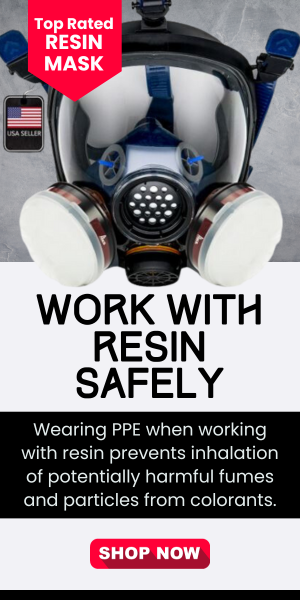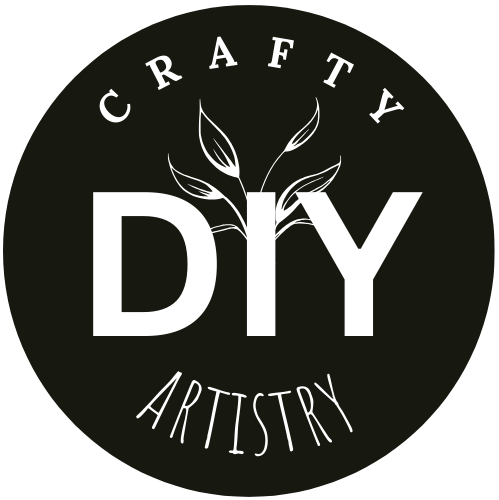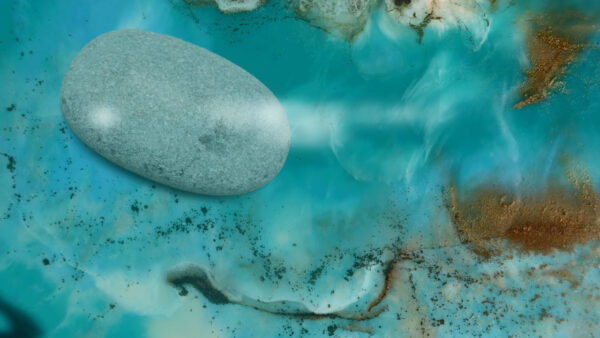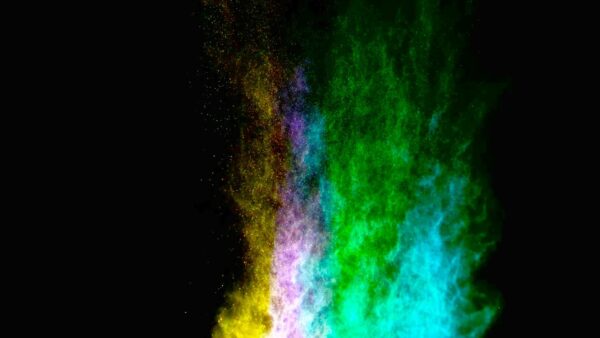Resin Cure Times guide: How Long To Dry [2025]
This will answer one of the most asked questions: How long does it take for resin to dry and cure? This resin curing guide is here to help!
One of the most important parts of working with resin is understanding how long it takes to cure. Every brand is a little different, and factors like temperature, humidity, and how deep your pour is can all affect the final result. In this post, I’ll go over typical resin cure times and how to make sure your project sets up properly.
When I first started using resin, I didn’t realize just how long I needed to wait. I’d get excited, touch it too soon, and end up with a fingerprint or a dent. Now I always check the label and give it a full cure, even if it looks dry on the surface, it’s worth the wait every time.

How Long it takes for resin to cure
1. Epoxy Resin Cure Times
So how long does it normally take for epoxy to cure? The most common curing time for epoxy resin is typically around 24 to 72 hours. This duration may vary slightly depending on the specific brand and formulation of epoxy resin you’re using.
It’s important to note that epoxy resin curing times can be influenced by factors such as temperature, humidity, and the thickness of the resin layer.
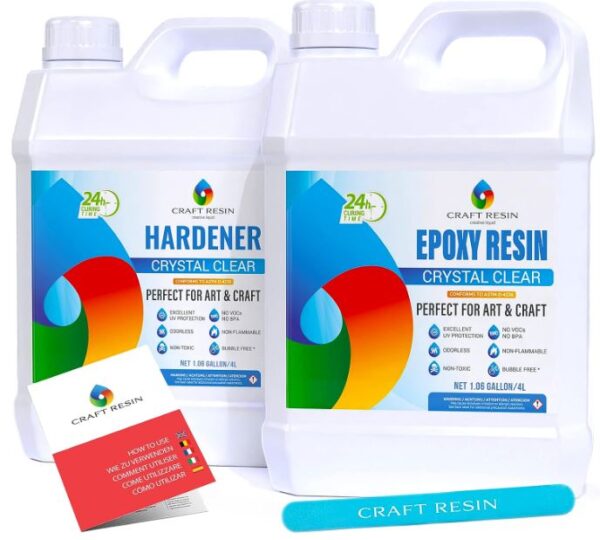
In some cases, epoxy resins designed for faster curing may set in as little as 12 hours, while others, formulated for deep pours or specific applications, might require several days to get full curing and hardness.
Always refer to the manufacturer’s instructions for the epoxy resin product you’re using for the most accurate curing time.

2. UV Resin Cure Time
How to make UV resin hard will take a UV lamp for resin curing or sunlight. The cure time for UV resin is typically much faster than for traditional epoxy resins, UV resin cures almost instantly or within a few minutes when exposed to ultraviolet (UV) light.
The exact curing time can vary depending on things such as the intensity of the UV light source, the thickness of the resin layer, and the specific brand and formulation of UV resin.
In many cases, UV resin can cure within 1 to 5 minutes when using a UV lamp or direct sunlight. Some UV resins are designed to cure quickly when making small things like jewelry making, fly tying, or small craft projects.

For more different types of resins, see this guide on the types of resin that are available and what they can be used for.
Its rapid curing time, often within minutes, makes it a good choice for making things like jewelry, small 3D printing, and model building.
I made this pendant and it cured in under 3 minutes.
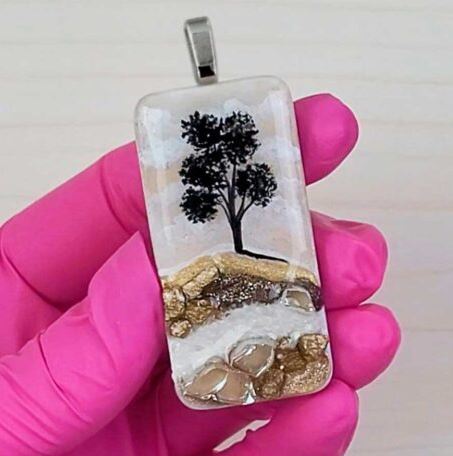
Equally as important is to make sure your UV resin lamp is strong enough to cure the resin. If this is something you might want to try to make, head on over to this article about the best UV resins for jewelry making.
Take appropriate safety precautions when working with UV light sources to protect your eyes and skin from UV radiation.
3. Polyester Resin Cure Time
This type of resin is different from UV resin in that Polyester resin typically takes 24 to 48 hours to cure. Though full curing may take a few days, depending on environmental conditions and resin thickness.
Manufacturers commonly use these types of resins in fiberglass reinforced products, including boat building, automotive body repair, and surfboard construction.
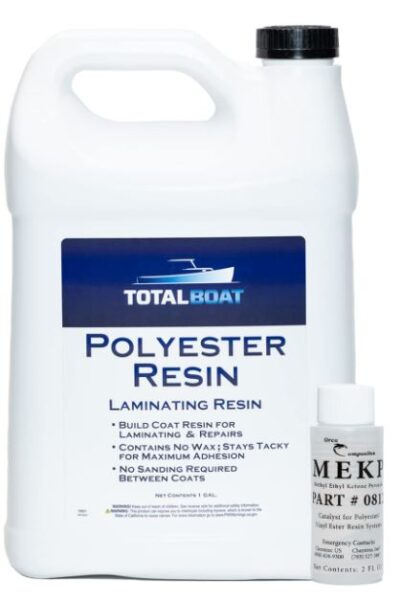
Polyester resins are easy to work with and have a relatively low cost. They cure through a process called polymerization. This requires the addition of a catalyst, typically a peroxide, to initiate the curing process.
Polyester resins are strong and resistant to moisture, but they yellow more quickly over time compared to epoxy resins. See why is my resin turning yellow.
4. Polyurethane Resin Cure Time
The cure time for polyurethane resin can vary. It often ranges from 12 to 48 hours for a complete cure. With additional curing time sometimes required for larger or more complex projects.
Polyurethane resins are a group of resins known for their flexibility, impact resistance, and wide range of applications. They are often used in casting and molding for items like figurines, prototypes, and decorative elements.
Polyurethane resins come in a variety of formulations, including flexible and rigid types, which makes them suitable for different purposes. They can be poured, brushed, or sprayed, offering flexibility in application methods.

Some Things That Will Affect Resin Cure Times
Here is what to know about curing resin and what can affect the curing times.

Temperature
Temperature is one of the most influential environmental factors when working with resin.
In general, a higher temperature accelerates the curing process, while a lower temperature slows it down. Most resin products have an ideal temperature range for curing, typically between 70°F to 80°F (21°C to 27°C).
Maintain a stable and controlled environment within this range to ensure consistent curing. Extreme temperatures can lead to issues like incomplete curing or crystallization of the resin.
Humidity
Humidity levels can also affect the curing of resin, especially for moisture-sensitive resins like epoxy. High humidity can introduce moisture into the resin, causing cloudiness, bubbles, or a weakened bond.
In contrast, low humidity may lead to faster curing but can result in a brittle or uneven finish. Properly sealing and storing your resin materials in a dry environment is essential to prevent moisture-related issues.
Ventilation
Good ventilation is important during the resin curing process. Adequate airflow helps disperse any fumes emitted during curing and minimizes the risk of inhaling potentially harmful vapors.
It also assists in reducing the formation of surface imperfections, like dust or particles settling on the resin while it’s still tacky. Use fans or work in well ventilated areas to ensure a safe and smooth curing process.

Resin Thickness May Alter Cure Times
The thickness of the resin layer will affect the curing and drying time, as well as the overall success of your resin project. When I was pouring a river table, I used a deep pour epoxy and poured 3-4 inches and it was hard in about 5 hours. But not rock hard for a few days.
epoxy resin drying time for Thicker Resin
How long does epoxy resin take to cure will also depend on how thick you are pouring it. The thicker the resin layer, the longer it typically takes to cure. This is because curing is an exothermic process (releasing heat), and thicker layers generate more heat, which can extend the curing time.
Depending on the type of resin and its specific formulation, a thick pour may take considerably longer to harden than a thin one. For large or deep pours, you need to use resins made for casting. They have longer curing times to prevent excessive heat buildup for complete curing.
The epoxy dry time on wood in this photo was completely set in about 3 hours and then fully cured at 24 hours. This was a 3″ deep pour. It would take about the same time for the epoxy to dry on plastic if you are using a plastic mold.

Heat Generation
As mentioned earlier, thicker resin layers generate more heat during curing. Excessive heat can lead to issues like bubbling, cracking, or uneven curing. See this guide about why resin gets hot while curing.
Potential for Imperfections
Thicker resin layers are more prone to trapping air bubbles in resin, which can negatively impact the final appearance of your project. When working with thicker layers, you can do a slower pour or apply resin in layers to minimize the risk of imperfections.
Added Colorants Will sometimes affect curing
Color additives, such as pigments, dyes, or mica powders, are used to tint resin and create vibrant, customized designs. These will give you endless possibilities from making everything from transparent jewel toned creations to opaque, multicolored things. Typically there is no alter to cure times when you are using colorants in resin.
Here I am using Rolio pigment paste and there was no extra curing time needed.
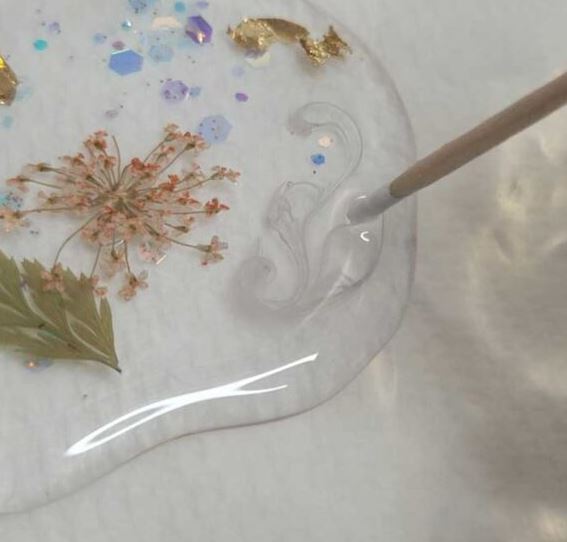
Glitters and Inclusions
For that extra touch of sparkle or texture, you can incorporate glitters, sequins, dried flowers, or other inclusions into your resin projects. These additives add a touch of whimsy and uniqueness to your creations, making them truly one-of-a-kind. As with colorants, typically there is no alter to cure time using glitters.

Mixing Ratio
Not all resins are mixed the same way, so always check the label before you start. Some need a 1:1 ratio, and others might be 2:1 or something totally different. If you don’t mix it right, your project might stay sticky or not cure at all, so it’s worth double-checking before you pour.
Proper Mixing
Make sure you mix your resin for the full time listed on the bottle and don’t rush it. If you stop early or don’t scrape the sides and bottom, you might end up with soft spots or tacky resin. Take it slow and steady, and set a timer if you need to.

Exothermic Reaction
When the resin and hardener are mixed correctly, they initiate an exothermic reaction, releasing heat. This heat can affect the curing time, and in larger or deep pours. This is why people don’t usually pour resin in more than 4″ at a time, it can really get hot.
Mold Type
The size and depth of the mold are also important when working with resin. Deeper molds might require additional curing time to ensure complete solidification. The choice of mold type is one of the fun things for resin making.
Here’s are some of the best silicone molds for resin.
Thanks for stopping by! I hope this helped clear up some of the confusion around resin cure times. Knowing when your resin is fully cured can save your project and give you the best results possible. Feel free to share this with a friend who’s getting into resin, and come back anytime for more tips and tricks.
When working with thicker resin pours, it’s important to be patient and take safety precautions. Use proper ventilation, and follow the manufacturer’s guidelines for handling large volumes of resin to avoid health risks associated with exposure to fumes.
